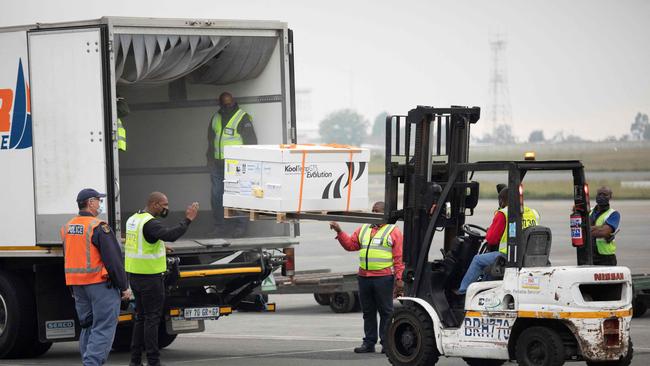South Africa’s drop in Covid-19 cases adds to questions about waves of infections
Surprising decline after surge shows scientists still have much to learn about how the coronavirus moves through society.

Earlier this year, doctors and epidemiologists in South Africa’s economic capital were bracing for the worst. A new coronavirus strain was surging across the country, thousands of holidaymakers were due to return from COVID-19 hot spots, and one in three coronavirus tests was coming back positive.
Then something unexpected happened: COVID-19 cases started dropping. Since mid-January, confirmed COVID-19 infections in South Africa have fallen from a record of nearly 22,000 a day to about 1000, without a large-scale vaccination campaign or stringent lockdown.
Fewer than 5 per cent of COVID-19 tests are finding traces of the virus, a sign that health agencies are missing fewer cases. The government has lifted most of its remaining virus restrictions for the country of 60 million people.
The cause of this steep decline in cases remains somewhat of a mystery. As in other countries that have at some point experienced surprising drops in COVID-19 cases — such as India, Pakistan and some parts of Brazil — epidemiologists and virologists are piecing together different explanations for why the outbreak in South Africa isn’t following patterns set elsewhere.
Those range from important population groups reaching sufficient levels of immunity to slow down transmission, to people sticking more closely to social-distancing rules, such as wearing masks and voluntarily reducing contacts, when deaths were mounting before the decline.
“Anybody who professes certainty is lying,” said Harry Moultrie, a senior epidemiologist at South Africa’s National Institute for Communicable Diseases, or NICD. “There is so much uncertainty in all of this.”
One complicating factor in South Africa, as in some other countries, is that researchers don’t know the true toll of the virus on the population. Because of limited testing capacities and asymptomatic infections, there is no definitive data on how many people have recovered from COVID-19 and may now be immune.
Virologists are continuing to study the coronavirus variant, known as B. 1.351, that powered the latest wave of infections here. The strain appears to make some existing vaccines less effective and, in some cases, has reinfected people who had recovered from a previous bout of COVID-19.
In contrast to the slump in cases much of Europe experienced last summer, the drop in infections in South Africa didn’t follow a strict government-imposed lockdown. The simplest explanation for the sudden mid-January drop in cases was that sections of the population had reached a level of immunity that made it harder for the virus to jump between different groups, said Jinal Bhiman, a principal medical scientist at the NICD.
Only about 1.5 million South Africans, about 2.5 per cent of the population, have tested positive for COVID-19. But it is clear that the actual level of infection has been much higher.
Since cases first started surging in May, the country has recorded more than 145,000 excess deaths, of which 85-95 per cent are probably due to COVID-19. That means that about one in 500 people in South Africa has died of the disease over the past 10 months.
In the absence of national herd immunity, scientists are focusing on the role of certain networks, or individuals with many social or work contacts, in driving and eventually slowing down localised outbreaks. “Highly sociable people get infected first, and the virus moves through these networks,” said Dr Moultrie. When enough people in those networks have become immune, transmission peters out.
Researchers around the world are also studying the impact of voluntary changes in behaviour, which can anticipate and strengthen government-imposed restrictions. “When the rates go up, people modify their behaviour,” said Saad Omer, director of the Yale Institute for Global Health. Just as a small increase in social contacts can drive an exponential rise in infections, curtailing gatherings when infections are already declining can further hasten the fall. “Small changes can have massive consequences,” Dr Omer said.
Perhaps the most difficult question to answer is what is going to happen next. Will cases go up again, perhaps powered by yet another coronavirus strain, as happened about two months after South Africa ended its first wave of infections in September? Juliet Pulliam, who directs South Africa’s Centre of Excellence in Epidemiological Modelling and Analysis, says there is no way to know. “I don’t think it is possible to predict with certainty when, or even whether, there will be a third wave in South Africa,” she said.
The Wall Street Journal



To join the conversation, please log in. Don't have an account? Register
Join the conversation, you are commenting as Logout